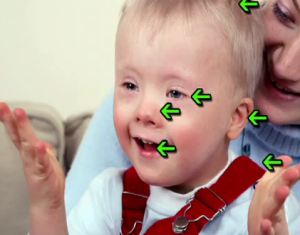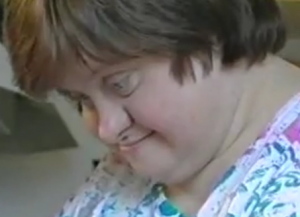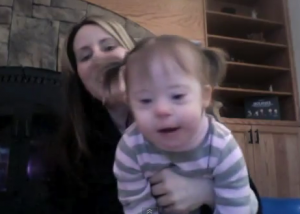What is Down Syndrome ?
One of the common genetic disorders known today is Down Syndrome. The condition causes mild to severe physical and mental anomalies. Children affected by the syndrome may also suffer from other kinds of medical conditions. The condition occurs when a child is born with an extra copy of chromosome number 21.
Early diagnosis is extremely important for children with Down Syndrome. This is because the accompanying medical conditions may get worse and deprive the sufferers from living their life more fully. Besides, early medical and psychological intervention makes a big difference to the overall health and well being of the child. Indeed, children who receive early treatment have better prognosis and increased life expectancy.
Causes of Down Syndrome
The syndrome develops when a child is born with three copies of chromosome 21, so instead of having 46 chromosomes, he/she has 47 chromosomes. The extra chromosome interrupts the child’s normal development causing developmental delays, facial features distinct to those afflicted with Down syndrome, and sometimes, mental retardation.
The anomaly is thought to occur due to abnormal cell division. The syndrome is classified into three, and these are:
- Trisomy 21
Majority of the cases of Down Syndrome is Trisomy 21 which is attributed to the abnormal division of cells during egg or sperm cell development.
- Translocation DS
This form of Down Syndrome arises as a result of an extra chromosome 21 that attaches itself to a translocated chromosome, either before or during conception. The translocated variant rarely occurs and often runs in the family. The possibility of developing this type is high for female carriers than male.
- Mosaic DS
This form of Down Syndrome rarely happens, but it is brought forth by the abnormal division of cells after fertilization.
Down Syndrome Life Expectancy
Advances in medical sciences had paved the way for Down Syndrome patients to live a little bit longer. In fact, many are now able to finish high school, obtain college degrees and keep full time jobs. Previously, sufferers were expected to live around 9 years only; but now, they can be expected to endure even up to 60 years.
Still, the mortality rate is quite high before and during the first year of life because the syndrome comes with a number of health conditions like heart defects. It is for this reason that sufferers require proper care during the early days and years of life.
Signs and Symptoms of Down Syndrome
It is not that difficult to recognize a person with Down Syndrome. This is because they share some similarities even if they are not related to each other. However, it should be noted that each one of them bears different degrees of mental, medical and physical anomalies. Some endure many symptoms while others have less. The severity of the symptoms also varies from mild to intense.
- Physical features
Children with Down Syndrome have distinct facial features, which include flat face, small ears, protruding tongue and slanting eyes.
- Developmental delays
Those affected by the syndrome are flaccid and suffer from hypotonia or weak muscle tone. Whereas normal kids their age have started to sit, crawl and walk, children suffering from the syndrome learn these things a lot slowly.
- Learning problems
The syndrome has a huge effect on the learning ability of the child, thus, causing learning problems. The affected child tends to grasp and understand things and concepts at a slower pace than other children without the syndrome.
- Medical problems
Kids affected by the condition also suffer from other health problems, including heart defects, respiratory problems, childhood leukemia, gastrointestinal problems, thyroid problems, hypo or hyperthyroidism, epilepsy, as well as hearing and vision problems. Some are also obese, have functional disorders like GERD, and develop certain types of skin problems such as atopic dermatitis. Due to their compromised immunity, kids with the syndrome easily acquire viral and bacterial infections.
Down Syndrome Statistics
The syndrome affects 1 out of 800 births. It had been found that women over 35 years old are at high risk of giving birth to a child with the condition. Studies also showed that those who had a child with the syndrome also have a 1% chance of siring another offspring afflicted by the same condition. Moreover, parents who carry a translocated chromosome can pass it to their children.
Facts about Down Syndrome
Down Syndrome in children is influenced by maternal age. Statistically speaking, the risk of having a baby with Down Syndrome is 1 in 1250 cases for a woman at 25 years of age. At age 30, the risk is 1 in 900 and at the age of 35, the age of having a baby with DS is 1 in 350. By age 40, the woman has 1 in 100 chances of having a baby with Down Syndrome. By 45, the risk is 1 in 30. An interesting to note is that though the risk is greater with passing age, more than 80 percent of cases of babies with Down Syndrome are born to mothers under the age of 35. This is because younger women tend to have more babies than older ones.
Diagnosis for Down Syndrome
Diagnosis for the syndrome can be done before or after childbirth. Screening tests can be performed to determine the risk of a child in developing Down’s syndrome. These may include genetic ultrasound, multiple marker screening test, integrated screening test and Nuchal translucency testing.
On the other hand, diagnostic tests can determine whether a child actually has Down’s syndrome. These tests include Chorionic Villus Sampling (or CVS), Percutaneous Umbilical Blood Sampling (or PUBS) and Amniocentesis.
Down Syndrome Treatment
There is no cure for Down’s syndrome since the available treatments are designed towards managing the symptoms and treating the accompanying medical conditions. The sufferer will need to go through regular screening and checkups, take medications or have surgery. Treating Down’s syndrome involves working with a team of health professionals to design a treatment plan specific to needs of the patient.
Down Syndrome Pictures










Thanks for your posting. I would like to say this that the first thing you will need to perform is verify if you really need credit score improvement. To do that you will need to get your hands on a replica of your credit history. That should never be difficult, since the government necessitates that you are allowed to receive one free of charge copy of your own credit report annually. You just have to consult the right people today. You can either find out from the website for your Federal Trade Commission as well as contact one of the main credit agencies right away.